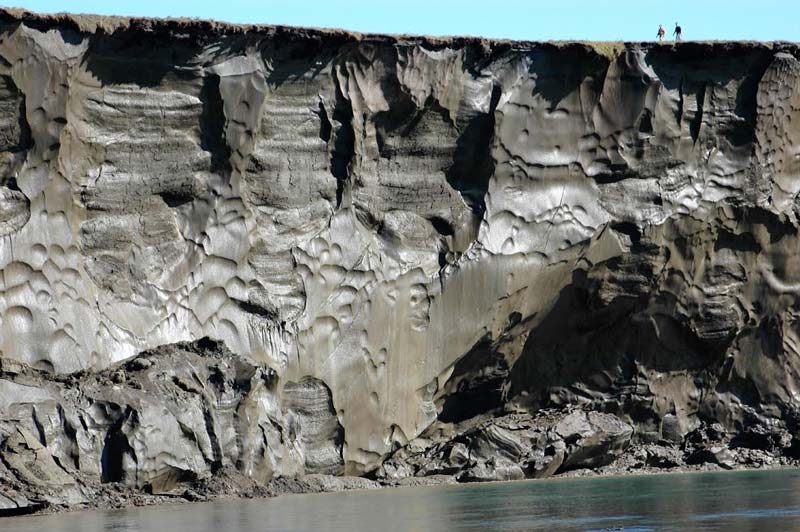
Image above: Itkillik River yedoma bluff.
Photo Credit: M. Kanevskiy.
Extremely ice-rich syngenetic permafrost, known as yedoma, is widespread in Siberia and Alaska. Yedoma formed in regions unglaciated during the late Pleistocene as a result of predominantly eolian, fluvial, and slope sedimentation. These ice- and organic-rich silty sediments can be more than 40 m thick and they contain large ice wedges of up to 10 m wide, which usually vertically span the whole yedoma sequence.
Yedoma is vulnerable to thermokarst and erosion because of its high ice content and silty composition.The most impressive yedoma site in Alaska is a 35-m-high bluff along the Itkillik River (a tributary of the Colville River). Due to very active thermal erosion, the average retreat rate for the most actively eroded part of this bluff is almost 20 m/y – probably the highest long-term rate of riverbank erosion ever observed in permafrost regions of Eurasia and North America.
This presentation is based on the results of field studies of yedoma structure and properties performed in northern Alaska since 2007.
Join this seminar from your computer, tablet or smartphone.
Or use audio via phone:
United States (Toll Free): 1 877 309 2073
Access Code: 767-524-941